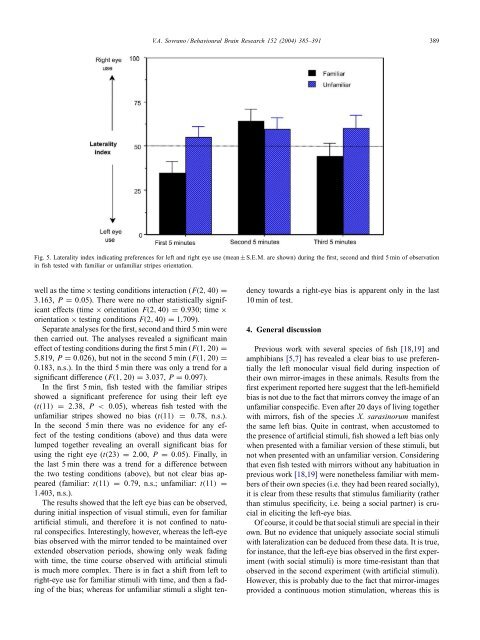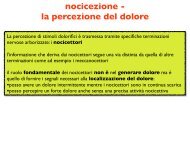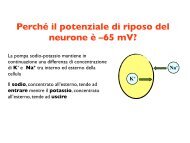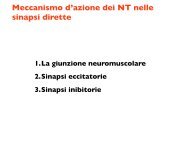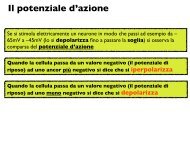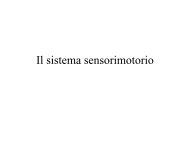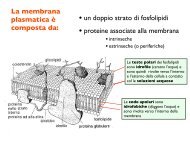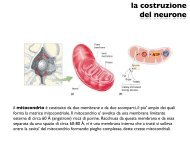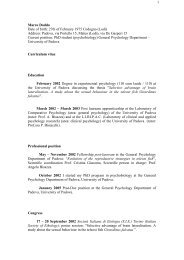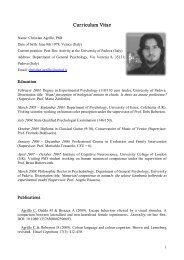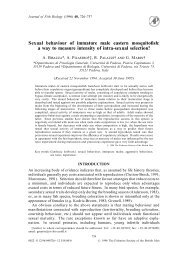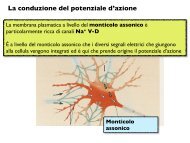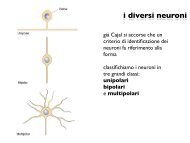Visual lateralization in response to familiar and unfamiliar ... - CPRG
Visual lateralization in response to familiar and unfamiliar ... - CPRG
Visual lateralization in response to familiar and unfamiliar ... - CPRG
Create successful ePaper yourself
Turn your PDF publications into a flip-book with our unique Google optimized e-Paper software.
V.A. Sovrano / Behavioural Bra<strong>in</strong> Research 152 (2004) 385–391 389<br />
Fig. 5. Laterality <strong>in</strong>dex <strong>in</strong>dicat<strong>in</strong>g preferences for left <strong>and</strong> right eye use (mean ± S.E.M. are shown) dur<strong>in</strong>g the first, second <strong>and</strong> third 5 m<strong>in</strong> of observation<br />
<strong>in</strong> fish tested with <strong>familiar</strong> or un<strong>familiar</strong> stripes orientation.<br />
well as the time × test<strong>in</strong>g conditions <strong>in</strong>teraction (F(2, 40) =<br />
3.163, P = 0.05). There were no other statistically significant<br />
effects (time × orientation F(2, 40) = 0.930; time ×<br />
orientation × test<strong>in</strong>g conditions F(2, 40) = 1.709).<br />
Separate analyses for the first, second <strong>and</strong> third 5 m<strong>in</strong> were<br />
then carried out. The analyses revealed a significant ma<strong>in</strong><br />
effect of test<strong>in</strong>g conditions dur<strong>in</strong>g the first 5 m<strong>in</strong> (F(1, 20) =<br />
5.819, P = 0.026), but not <strong>in</strong> the second 5 m<strong>in</strong> (F(1, 20) =<br />
0.183, n.s.). In the third 5 m<strong>in</strong> there was only a trend for a<br />
significant difference (F(1, 20) = 3.037, P = 0.097).<br />
In the first 5 m<strong>in</strong>, fish tested with the <strong>familiar</strong> stripes<br />
showed a significant preference for us<strong>in</strong>g their left eye<br />
(t(11) = 2.38, P < 0.05), whereas fish tested with the<br />
un<strong>familiar</strong> stripes showed no bias (t(11) = 0.78, n.s.).<br />
In the second 5 m<strong>in</strong> there was no evidence for any effect<br />
of the test<strong>in</strong>g conditions (above) <strong>and</strong> thus data were<br />
lumped <strong>to</strong>gether reveal<strong>in</strong>g an overall significant bias for<br />
us<strong>in</strong>g the right eye (t(23) = 2.00, P = 0.05). F<strong>in</strong>ally, <strong>in</strong><br />
the last 5 m<strong>in</strong> there was a trend for a difference between<br />
the two test<strong>in</strong>g conditions (above), but not clear bias appeared<br />
(<strong>familiar</strong>: t(11) = 0.79, n.s.; un<strong>familiar</strong>: t(11) =<br />
1.403, n.s.).<br />
The results showed that the left eye bias can be observed,<br />
dur<strong>in</strong>g <strong>in</strong>itial <strong>in</strong>spection of visual stimuli, even for <strong>familiar</strong><br />
artificial stimuli, <strong>and</strong> therefore it is not conf<strong>in</strong>ed <strong>to</strong> natural<br />
conspecifics. Interest<strong>in</strong>gly, however, whereas the left-eye<br />
bias observed with the mirror tended <strong>to</strong> be ma<strong>in</strong>ta<strong>in</strong>ed over<br />
extended observation periods, show<strong>in</strong>g only weak fad<strong>in</strong>g<br />
with time, the time course observed with artificial stimuli<br />
is much more complex. There is <strong>in</strong> fact a shift from left <strong>to</strong><br />
right-eye use for <strong>familiar</strong> stimuli with time, <strong>and</strong> then a fad<strong>in</strong>g<br />
of the bias; whereas for un<strong>familiar</strong> stimuli a slight ten-<br />
dency <strong>to</strong>wards a right-eye bias is apparent only <strong>in</strong> the last<br />
10 m<strong>in</strong> of test.<br />
4. General discussion<br />
Previous work with several species of fish [18,19] <strong>and</strong><br />
amphibians [5,7] has revealed a clear bias <strong>to</strong> use preferentially<br />
the left monocular visual field dur<strong>in</strong>g <strong>in</strong>spection of<br />
their own mirror-images <strong>in</strong> these animals. Results from the<br />
first experiment reported here suggest that the left-hemifield<br />
bias is not due <strong>to</strong> the fact that mirrors convey the image of an<br />
un<strong>familiar</strong> conspecific. Even after 20 days of liv<strong>in</strong>g <strong>to</strong>gether<br />
with mirrors, fish of the species X. saras<strong>in</strong>orum manifest<br />
the same left bias. Quite <strong>in</strong> contrast, when accus<strong>to</strong>med <strong>to</strong><br />
the presence of artificial stimuli, fish showed a left bias only<br />
when presented with a <strong>familiar</strong> version of these stimuli, but<br />
not when presented with an un<strong>familiar</strong> version. Consider<strong>in</strong>g<br />
that even fish tested with mirrors without any habituation <strong>in</strong><br />
previous work [18,19] were nonetheless <strong>familiar</strong> with members<br />
of their own species (i.e. they had been reared socially),<br />
it is clear from these results that stimulus <strong>familiar</strong>ity (rather<br />
than stimulus specificity, i.e. be<strong>in</strong>g a social partner) is crucial<br />
<strong>in</strong> elicit<strong>in</strong>g the left-eye bias.<br />
Of course, it could be that social stimuli are special <strong>in</strong> their<br />
own. But no evidence that uniquely associate social stimuli<br />
with <strong>lateralization</strong> can be deduced from these data. It is true,<br />
for <strong>in</strong>stance, that the left-eye bias observed <strong>in</strong> the first experiment<br />
(with social stimuli) is more time-resistant than that<br />
observed <strong>in</strong> the second experiment (with artificial stimuli).<br />
However, this is probably due <strong>to</strong> the fact that mirror-images<br />
provided a cont<strong>in</strong>uous motion stimulation, whereas this is


